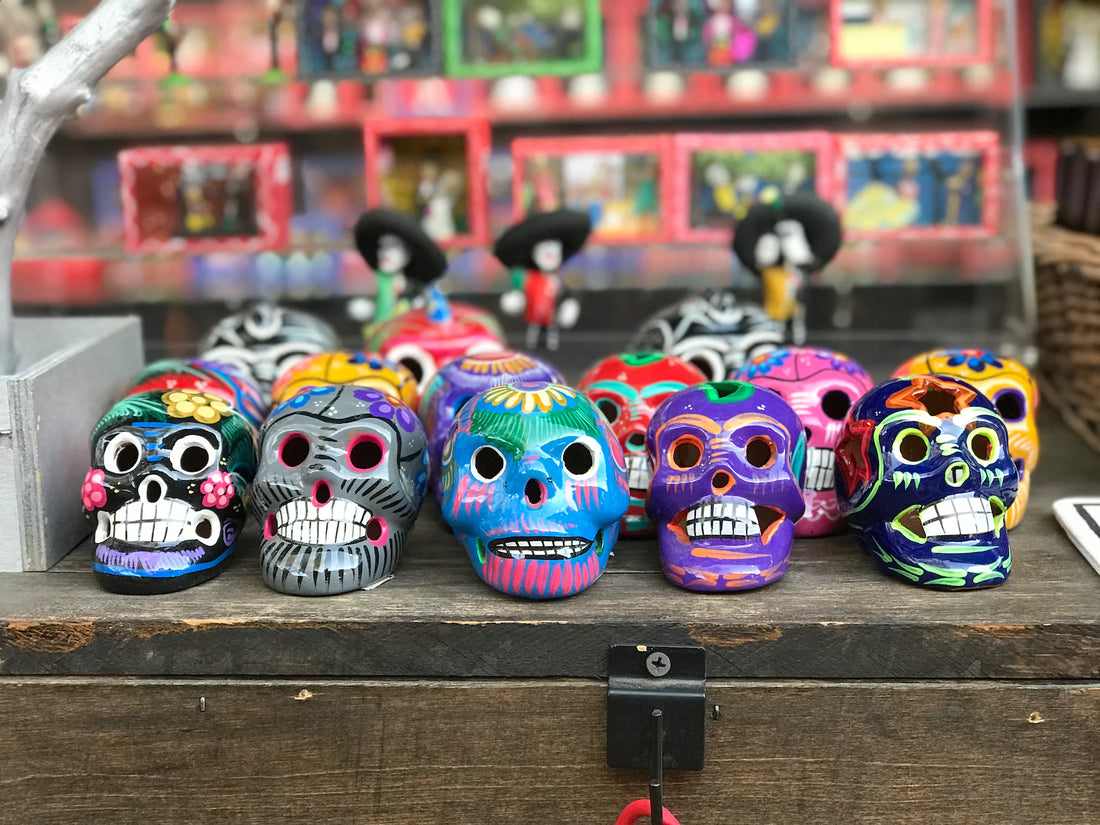
Conservation and Culture: Day of the Dead and Monarch Butterflies
Share
Halloween marks the beginning of The Day of the Dead (Día de Muertos) celebrations when the migrating eastern Monarch Butterflies arrive on the border between the Mexican states Michoacan and Mexico. Their migration started back in August in Canada when the drop in temperatures signaled the Monarchs to journey south to their warmer overwintering sites.
Maybe by fate, or just coincidence, the annual arrival of the Monarchs to Michoacan is at the same time as the celebration of The Day of the Dead. According to Mexican tradition, at midnight on October 31st, the gates of the “afterlife” open. On November 1st the souls of departed children arrive to visit their families, and on November 2nd, the souls of the departed adults visit.
At the nearby Monarch Butterfly Biosphere Reserve, the native communities await the sight of the Monarchs, representing the spirits and souls of their beloved, deceased family members, gliding around them to take part in a spiritual reunion. Elaborate altars and offerings are created with their loved one’s pictures, favorite food and drink, flowers, and Monarchs. It is like setting a table for a party, for a long-lost relative that has suddenly re-appeared, and is back for a short visit.
The Monarchs are also thought of as “the spirit of the forest and the souls of the departed.” Due to illegal logging and natural stream redirection for avocado plantations, indigenous groups in Mexico have resorted to defending the forest on their own. The war for control of the forest and nearby Reserve being waged by the country’s drug cartels is turning a natural wonder of the world into an inaccessible hostile territory, that no one can protect.
Hopefully, the recent media coverage of the Monarch population crises and its international designation as “endangered” brings more awareness to conservation projects in Mexico and the United States. Overwintering sites of Eucalyptus trees along the California coast for the western Monarch migration need to be maintained and protected from development, pesticides, and unwanted human involvement. More habitat needs to be built in residential landscapes and undeveloped land, which includes native milkweed (the only Monarch host plant) and year-round blooming nectar flowers.
If the economic value of milkweed is increased and can be accepted as a native crop as well as habitat, it could provide great ecological benefits. The “fluff” or floss from the seed pods was a remarkedly insulating and buoyant fiber that was used to fill life jackets in World War II, and today is used in high-end bedding from Ogallala Comfort. Milkweed Seed Oil is obtained from cold pressing the older seed without use of petroleum refining, producing a cosmetics oil high in Omega 6, 9, and 7 fatty acids. The most recent skin care product using this oil is from Monarch Botanika, a company that also partners with a Monarch conservation non-profit organization, Native Monarchs, to build habitat. The seeds are responsibly harvested by hand, and the plants are undisturbed. Creating bedding and beauty products that use sustainably sourced Milkweed Seed Oil could help the annual migration and provide other important environmental benefits.
Whether it symbolizes an environmental or spiritual connection, the Monarch Butterfly is a migratory species in trouble and at risk of being lost. Scientists estimate the size of Mexico’s colonies have shrunk by about 80%, with U.S. populations decreasing by over 80% in the east, and 90% in the west.
Fall is the perfect time to plant native Milkweed where it will, shortly after, enter a Winter dormancy period, reemerging for the Spring breeding season when the Monarchs leave the overwintering sites. Planting year-round blooming nectar flowers will help sustain them throughout their migration and overwintering periods and are critical to their survival.
So right after Halloween, as you put the costumes away and are grazing on your kid’s candy stockpile, take a minute to look around your yard for Monarchs. And if you happen to see one, think of it fondly as the spirit of a passed loved one, and wish it good luck to the end of its journey.
